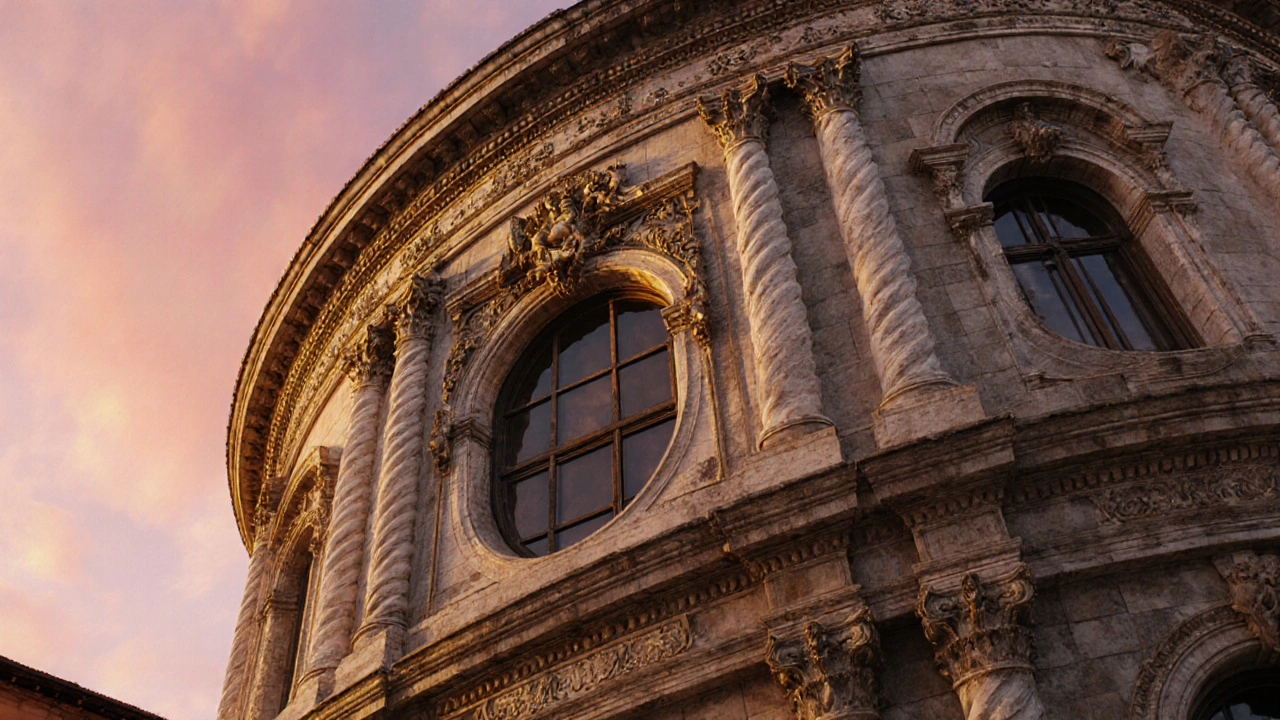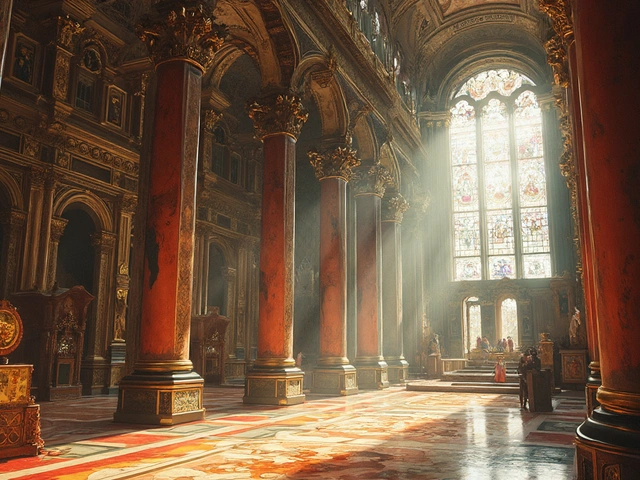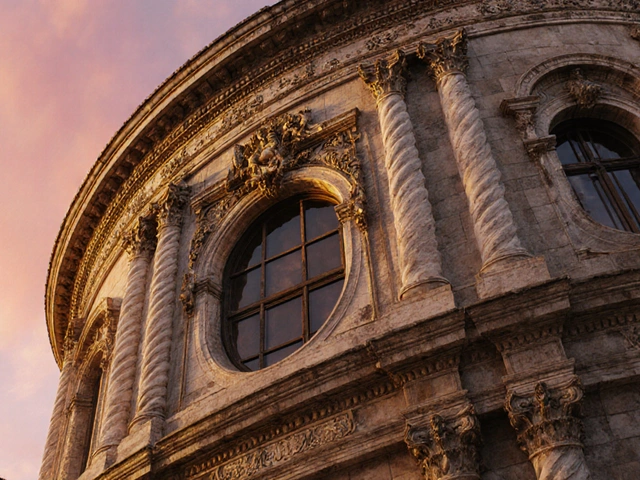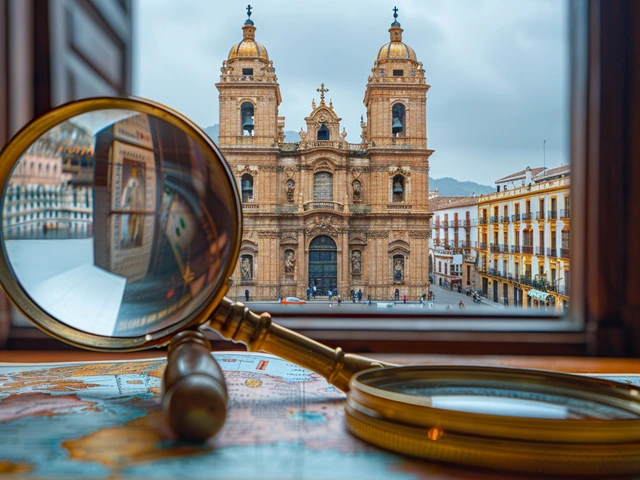Baroque Architecture Feature Identifier
Baroque architecture is known for its dramatic flair, emotional impact, and ornate details. Select the features you see in a building to determine if it exhibits Baroque characteristics.
Dynamic Shapes
Curved facades, oval windows, and undulating walls create a sense of movement.
Light & Shadow Play
Deep niches, layered columns, and large windows create dramatic lighting effects.
Rich Ornamentation
Sculpted cornices, gilded stucco, and frescoed ceilings add opulence.
Grand Spatial Sequences
Monumental staircases, long vistas, and layered chambers guide the eye upward.
Additional Features to Consider
Analysis Result
Quick Take
- Baroque architecture bursts with drama, movement, and lavish detail.
- It grew out of the Counter‑Reformation and the rise of absolute monarchs.
- Key traits include bold curves, theatrical lighting, and grand staircases.
- Famous examples range from Rome’s St.Peter’s Basilica to Versailles in France.
- Spotting Baroque? Look for dynamic façades, oval plans, and rich ornamentation.
What Is Baroque Architecture?
When people talk about Baroque architecture, they’re referring to a style that exploded across Europe in the late 16th to early 18th centuries. It’s a Baroque architecture a highly ornamental, theatrical building approach that emphasizes motion, contrast, and grandeur that was designed to impress both the faithful and the royal court.
Core Characteristics
Baroque buildings share a handful of visual shortcuts that make them instantly recognizable:
- Dynamic shapes: Curved façades, oval windows, and undulating walls create a sense of movement.
- Light‑and‑shadow play: Deep niches, layered columns, and large windows let sunlight carve dramatic patterns.
- Rich ornamentation: Sculpted cornices, gilded stucco, and frescoed ceilings add opulent detail.
- Grand spatial sequences: Monumental staircases, long vistas, and layered chambers guide the eye upward.
- Emotional impact: Everything is meant to stir awe, whether through soaring domes or intimate chapels.
Historical Context & Drivers
The rise of Baroque didn’t happen in a vacuum. Two major forces pushed architects toward excess:
- Counter‑Reformation the Catholic Church’s response to the Protestant Reformation, using art and architecture to inspire devotion commissioned awe‑inspiring churches that could emotionally engage worshippers.
- Absolute monarchs like Louis XIV used architecture as a political tool, turning palaces into symbols of power and control.
Iconic Examples Around the World
Below are some of the most celebrated Baroque structures, each a textbook case of the style.
- St.Peter’s Basilica the centerpiece of Vatican City, redesigned by Bernini and Maderno with a colossal dome and massive colonnades, Rome, Italy.
- Palace of Versailles Louis XIV’s royal residence, famous for its Hall of Mirrors, grand staircases, and meticulously planned gardens, France.
- Church of the Gesù often called the “mother church” of Baroque, featuring a unified interior space and a richly decorated façade, Rome, Italy.
- Jesuit Church of SãoRoque a Brazilian gem that blends European Baroque with local gold leaf artistry, Rio de Janeiro, Brazil.
- Winter Palace (Hermitage) a Russian palace with a flamboyant façade and opulent interior rooms, St.Petersburg, Russia.
Regional Variations
Baroque never looked exactly the same anywhere. Local traditions and materials reshaped the core ideas.
- Italian Baroque: Focused on movement and theatricality. Think of GianLorenzoBernini Italian sculptor‑architect whose works like the Baldacchino in St.Peter’s epitomize dynamic Baroque and lavish interiors.
- French Baroque (Classicism): More restrained, emphasizing order and symmetry. Versailles illustrates this controlled grandeur.
- Spanish Baroque (Churrigueresque): Extremely decorative, with twisting columns and elaborate façades, as seen in the Cathedral of Santiago de Compostela.
- Central European Baroque: Merges Italian dynamism with local folk motifs. The works of JohannBernhardFischervonErlach Austrian architect who introduced Italian Baroque to the Habsburg lands, notably with the Karlskirche in Vienna illustrate this blend.
- Latin American Baroque: Combines European forms with indigenous craftsmanship, producing colorful, stucco‑rich churches like the Iglesia de SanCarlos Borromeo in Puebla, Mexico.
The Style’s Legacy
Baroque didn’t end with the 18th century; it seeped into later movements:
- Rococo: A lighter, more playful offshoot that kept the curvy forms but softened the drama. Think of the Palace of Sanssouci’s pastel interiors.
- Neoclassicism: Reacted against Baroque excess, bringing back restrained geometry, yet still borrowed Baroque’s monumental scale for public buildings.
How to Identify Baroque Features (A Quick Checklist)
- Look for curved façades, convex or concave walls.
- Check for oval or centrally planned floor plans.
- Spot dramatic contrasts of light and shadow-deep reliefs, large windows.
- Note exuberant decoration: gilded stucco, sculptural groups, frescoes.
- Find a sense of movement: sweeping staircases, spiraling columns, dynamic spatial sequences.
Baroque vs. Neighboring Styles
| Aspect | Renaissance (14th‑16thc.) | Baroque (16th‑18thc.) | Rococo (18thc.) |
|---|---|---|---|
| Overall mood | Balanced, rational | Emotional, theatrical | Playful, intimate |
| Typical geometry | Symmetry, proportion | Curves, ovals, dynamic lines | Asymmetry, ornamental scrolls |
| Ornamentation | Classical orders, restrained | Rich stucco, sculpture, fresco | Delicate plasterwork, pastel colors |
| Key purpose | Humanist ideals, proportion | Religious awe, royal power | Leisure, aristocratic charm |
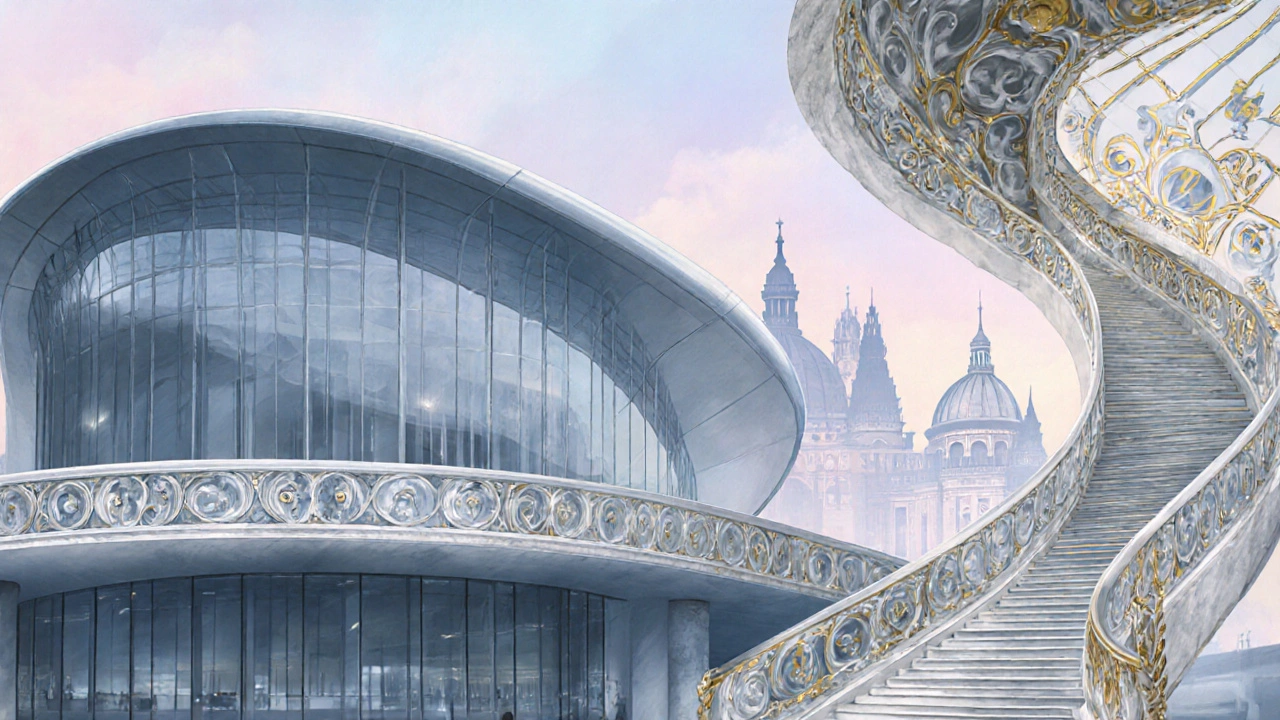
Frequently Asked Questions
When did Baroque architecture first appear?
Baroque emerged in Italy around the 1580s, gaining momentum after the 1600Council of Trent and spreading across Europe over the next two centuries.
What distinguishes Baroque churches from earlier ones?
Baroque churches use light, movement, and dramatic sculpture to create an immersive spiritual experience, unlike the more static, proportion‑focused Renaissance churches.
Can Baroque elements be used in modern design?
Yes. Contemporary architects sometimes borrow Baroque curvature, bold staircases, or theatrical lighting to add drama to hotels, museums, and civic buildings.
Why is Baroque sometimes called “the architecture of power”?
Because monarchs and the Catholic Church commissioned massive, awe‑inspiring projects to assert dominance; the sheer scale and ornamentation were visual statements of authority.
What are common mistakes when restoring Baroque interiors?
Typical errors include over‑cleaning the stucco (removing patina), using modern lighting that flattens contrast, or replacing original gilding with cheaper finishes that dull the intended sparkle.

